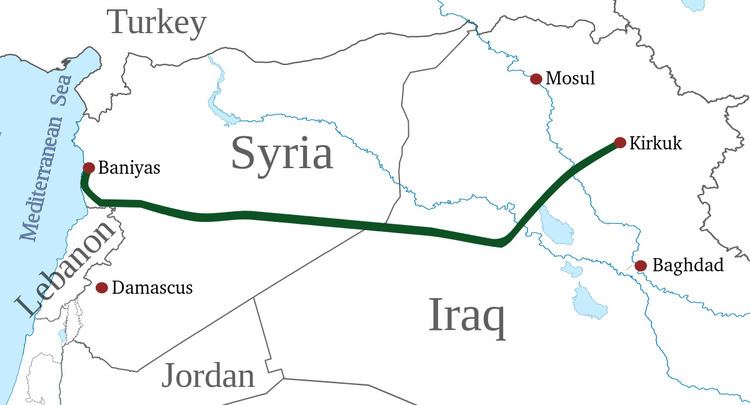Country IraqSyria Length 800 km (500 mi) | Type crude oil Commissioned 1952 | |
 | ||
Maximum discharge 0.3 million barrels per day (~1.5×10^ t/a) | ||
Kirkuk baniyas pipeline
The Kirkuk–Baniyas pipeline is a crude oil pipeline from the Kirkuk oil field in Iraq to the Syrian port of Baniyas. The pipeline is around 800 kilometres (500 mi) long and the capacity is 300 thousand barrels per day (48×10^3 m3/d). The pipeline was opened on 23 April 1952. During the 2003 invasion of Iraq, the pipeline was damaged by U.S. air-strikes and remained out of operation since then.
On 17 December 2007, Syria and Iraq agreed to rehabilitate the pipeline. The pipeline was to be reconstructed by Stroytransgaz, a subsidiary of Gazprom. However, Stroytransgaz failed to start the rehabilitation and the contract was nullified in April 2009. As the rehabilitation of the existing pipeline occurred to be more costly than building a new pipeline, in September 2010 Iraq and Syria agreed to build two new Kirkuk–Baniyas pipelines. One pipeline with capacity of 1.5 million barrels per day (240×10^3 m3/d) would carry heavier crude oil while another pipeline capacity of 1.25 million barrels per day (199×10^3 m3/d) would carry lighter crude oil.
